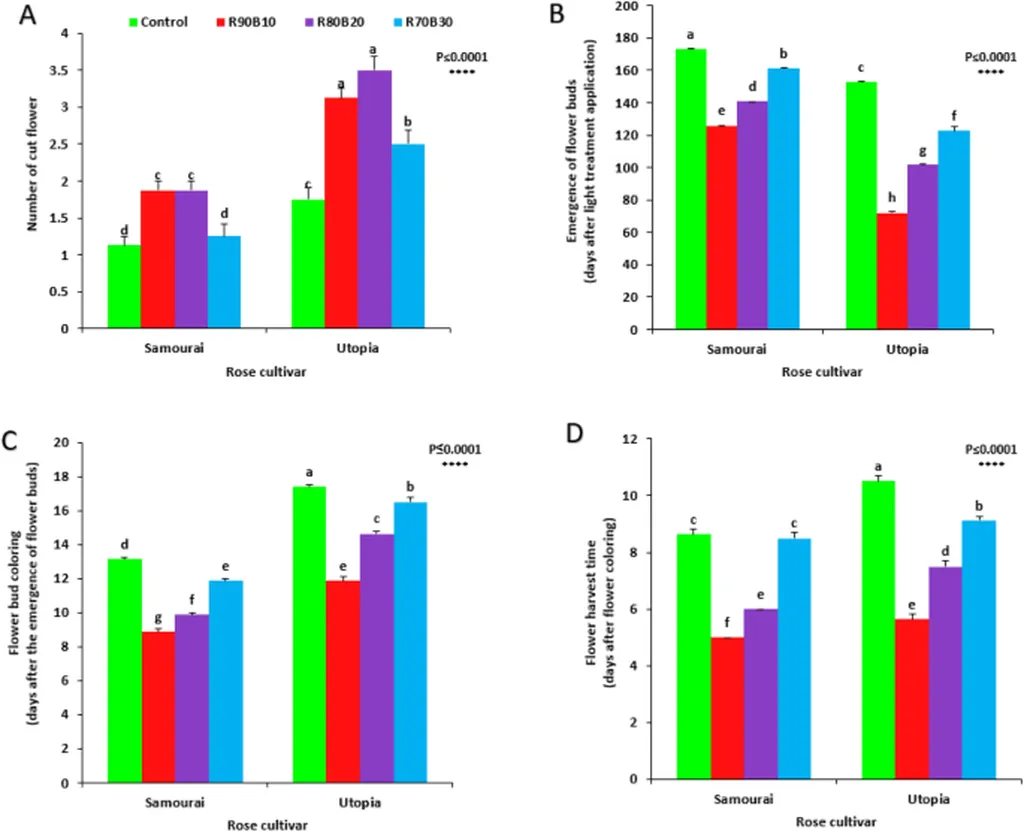In the heart of South Korea, researchers at Chungbuk National University are shedding new light on the future of controlled environment agriculture (CEA). Moon-Sun Yeom, a lead author from the Division of Animal, Horticultural, and Food Sciences, has been exploring how tailored light spectra can significantly boost the yield and quality of medicinal plants. The findings, published in Scientific Reports, could reshape how we think about vertical farming and the energy sector’s role in sustainable agriculture.
Yeom and his team focused on Glehnia littoralis, a medicinal herb known for its valuable compounds like imperatorin, bergamottin, and coumarin. The challenge? Identifying the optimal light conditions for this plant in a controlled environment. “Selecting the right light spectrum is crucial for crop yield and quality, but it’s a complex process that requires extensive testing,” Yeom explains. To tackle this, the researchers employed a mixture design and response surface methodology, using red (R), green (G), and blue (B) based LEDs to pinpoint the best light spectrum.
The results were striking. The optimal light spectrum was found to be R:B = 7:5, a balance that enhanced growth through the synergy of red and blue light. “We found that the high proportion of blue light not only stimulated secondary metabolism but also led to increased biomass and accumulation of medicinally valuable compounds,” Yeom notes. This means that by fine-tuning the light spectrum, farmers can potentially boost both the quantity and quality of their crops.
The implications for the energy sector are profound. As vertical farming gains traction, the demand for energy-efficient and effective lighting solutions is set to rise. Yeom’s research suggests that tailored light spectra could be a game-changer, offering a more sustainable and scalable production system for high-value medicinal plants. “This study highlights the potential of using tailored artificial light spectra in CEA to overcome cultivation challenges and optimize yield and quality,” Yeom says.
The findings could also pave the way for more innovative lighting solutions in the energy sector. As the world moves towards more sustainable practices, the ability to optimize light spectra for specific crops could reduce energy consumption and improve efficiency. This research is a step towards a future where technology and agriculture intersect to create more sustainable and productive farming practices.
In the broader context, Yeom’s work is part of a growing trend in agritech that focuses on precision agriculture. By understanding and manipulating the environmental factors that affect plant growth, researchers are opening up new possibilities for sustainable and efficient farming. The energy sector, in turn, stands to benefit from these advancements, as the demand for energy-efficient solutions continues to grow.
As we look to the future, the intersection of technology and agriculture promises to bring about significant changes in how we grow and produce our food. Yeom’s research is a testament to the power of innovation and the potential it holds for shaping a more sustainable and efficient agricultural landscape. With further research and development, the energy sector could play a pivotal role in driving this transformation, creating a future where technology and nature work hand in hand to meet the world’s agricultural needs.

